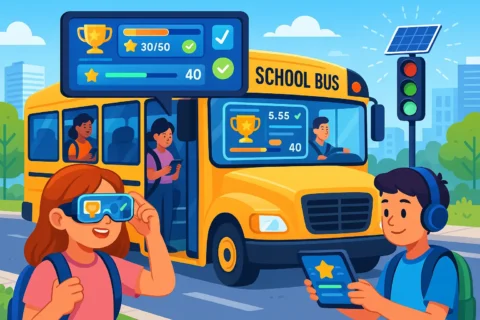The Quiet Intelligence Behind Every Solution for School Transportation Management: How Emotional Mapping Is Reshaping Student Mobility
Most conversations about school transportation focus on efficiency metrics—minutes saved, fuel consumed, routes optimized. But beneath these operational wins lies something far more compelling: the emergence of emotional intelligence in mobility design. Today’s most thoughtful platforms are building what we might call “care-aware routing,” where the solution for school transportation management considers not just the fastest path, but the safest emotional journey for students navigating their daily commute.
This represents a fundamental shift in how we think about getting children to school. Traditional GPS systems treat every road segment as neutral territory—a series of turns and distances to minimize. But ask any parent or student, and they’ll tell you: not all routes feel the same. Some neighborhoods trigger anxiety. Certain pickup sequences leave vulnerable students waiting alone. Weather conditions affect more than just travel time; they reshape the entire experience of being on a bus.
When Data Learns to Listen
The most sophisticated solution for school transportation management now incorporates behavioral analytics that previous generations of software couldn’t imagine. These systems observe patterns invisible to human schedulers: which students consistently request seat changes, where bullying incidents cluster by time and location, how special needs accommodations ripple through fleet utilization. This isn’t surveillance—it’s attentiveness at scale.
Consider how modern platforms handle the 3:15 PM dismissal chaos. Rather than treating every school as an identical logistical challenge, adaptive systems recognize that Meadowbrook Elementary has anxiety-prone kindergartners who need longer boarding windows, while Jefferson Middle School serves confident eighth-graders who can manage tighter transitions. This contextual awareness transforms a rigid solution for school transportation management into something more like a responsive nervous system, adjusting in real-time to the human reality of each community.
The Physics of Trust
Parents don’t think about their child’s commute in terms of algorithm efficiency. They think about trust. Will my daughter be the last one dropped off as darkness falls? Does the driver know about my son’s peanut allergy? Can I see exactly where the bus is when it’s running late? These aren’t edge cases—they’re the core experience.
The most effective solution for school transportation management acknowledges this by building transparency into every interaction. Real-time tracking isn’t just about dot-on-a-map functionality; it’s about predictive communication that anticipates parental concern. When a bus deviates from its scheduled route due to construction, smart systems don’t just reroute—they proactively notify affected families with updated ETAs and explanations. This transforms anxiety into confidence, one notification at a time.
What makes this particularly compelling is how it scales empathy. A single transportation director might build these trust relationships manually for a small district. But a thoughtfully designed solution for school transportation management extends that same careful attention across thousands of students, making the complex feel personal.
Invisible Architecture
Perhaps the most overlooked innovation is how modern systems handle what doesn’t happen. Every potential safety incident avoided. Every dietary restriction automatically flagged. Every weather delay communicated before parents start worrying. These negative spaces—the problems that never materialize—represent the highest form of systematic care.
Districts implementing a comprehensive solution for school transportation management report something unexpected: their staff spends less time firefighting and more time building relationships. When technology handles the predictable complexity—optimal routing, compliance tracking, maintenance scheduling—human intelligence can focus on the irreplaceable work of knowing students as individuals.
This redistribution of cognitive labor matters enormously. Transportation coordinators who once spent mornings buried in spreadsheets now have bandwidth to notice when a student’s behavior changes or when a driver needs additional support. The solution for school transportation management becomes infrastructure for human judgment rather than a replacement for it.
Design for Dignity
The future of student mobility isn’t about autonomous vehicles or drone delivery—it’s about systems that honor the dignity of every participant in the transportation ecosystem. Drivers deserve intuitive tools that respect their expertise. Students need routes that recognize their developmental stage and social dynamics. Administrators require interfaces that surface insight without drowning them in data.
The best solution for school transportation management platforms understand that optimization without empathy creates efficient systems that fail at their fundamental purpose: getting children safely to places where they can learn and grow. This means building software that asks different questions. Not just “What’s fastest?” but “What feels safe?” Not just “What’s cheapest?” but “What’s fair?”
As districts evaluate their options for a modernized solution for school transportation management, the differentiator won’t be feature checklists. It will be whether the platform was built with genuine curiosity about the lived experience of school commutes—and whether it treats that experience as worthy of thoughtful, continuous attention.
The buses still run on diesel and follow painted roads. But the intelligence guiding them? That’s becoming something remarkably more human.





